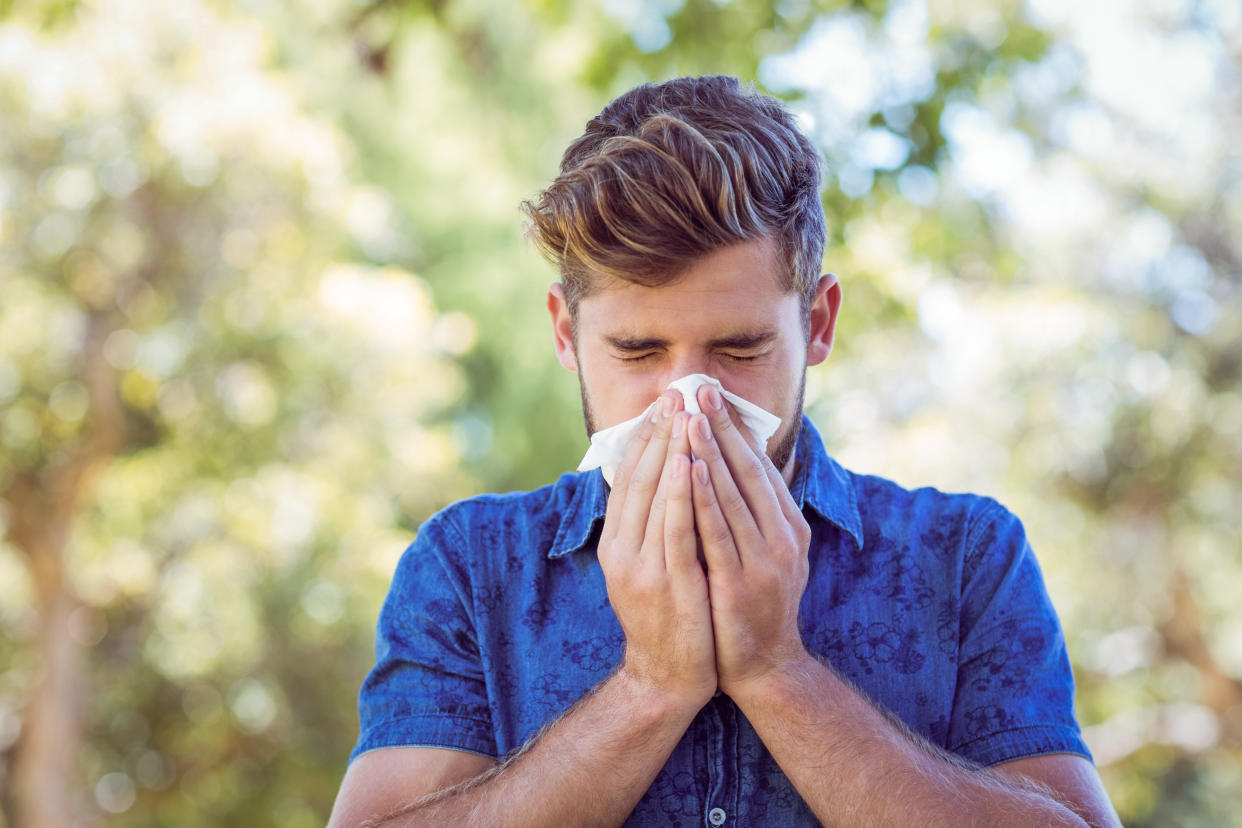Summer colds and flu are more common than you think. Here's how to tell if you have one — and how to treat it.

Just as you’re getting ready to hit the beach or embark on that long-awaited vacation, you may be blindsided by those telltale achy, sneezy symptoms. But it’s summer — can you really get sick?
Unfortunately, yes. Experts say that while it’s true that respiratory viruses survive better in low temperatures and low humidity, colds, influenza and COVID-19 don’t just disappear when the days get longer and the weather warms up.
“There's a whole group of viruses called enteroviruses that very commonly cause summer colds that many people mistake for allergies,” Dr. Jim Conway, medical director of the University of Wisconsin Health Immunization Programs, tells Yahoo Life.
What’s behind summer colds and flu?
Experts say there are several reasons why summer can actually enhance the spread of respiratory viruses.
People are traveling. The Transportation Security Administration has anticipated that this year will be its busiest summer travel season ever. That means millions of people are packing into close quarters on airplanes and other public transportation with little ventilation and minimal masking.
It’s cold and flu season in the Southern Hemisphere. “A lot of people may be traveling to the Southern Hemisphere: Australia, New Zealand, South America, South Africa,” Dr. David Weber, an epidemiology professor at the University of North Carolina, tells Yahoo Life. “And keep in mind it's their winter, when flu and RSV are peaking. So you're certainly at risk for picking up one of those viruses if you're traveling in that locale, and you can certainly bring it back and potentially transmit it to people here.”
Heat drives people indoors. Extreme heat can drive people to congregate inside for the comforts of air conditioning. But those indoor conditions — with poor ventilation and chillier temperatures — replicate the same environment that enables respiratory viruses to spread so easily in the winter.
Immunity from vaccines has waned. While the annual flu shot that’s available each fall can offer some protection, Conway says that by the time April rolls around, the strain of influenza that those shots protect against has likely changed — “so that immunity doesn't quite hold up as well, and you start to see these little outbreaks that happen even in people that have been vaccinated,” he says. In fact, the rapidly-changing nature of SARS-CoV-2 could be one reason we keep seeing summer peaks of COVID-19. “The major factor driving COVID is not the weather and the humidity and the temperature," Weber says, "but the evolution of new variants.”
Is it a cold, the flu, COVID or allergies?
A summer cold or flu feels pretty similar to what you’d experience during the fall or winter. Here’s a refresher on how to differentiate them from one another.
Cold: Dr. Aashish Didwania, professor of medicine at Northwestern University, tells Yahoo Life that cold symptoms usually develop gradually. “Classic” cold symptoms include runny nose, sneezing, sore throat and mild cough. “Fever can happen, but it tends to be less common. And muscle aches and fatigue can happen, but they're typically mild,” Didwania says.
Flu: Influenza can also involve nasal symptoms and sore throat or cough; but unlike a cold, Didwania says flu symptoms will usually come on abruptly. “If I wake up one day and I've got a wicked headache, I feel like a truck ran over me, I'm spiking a fever, that's more likely flu than a cold,” he says.
COVID: Some symptoms that set COVID apart include loss of taste or smell and nausea, vomiting or diarrhea. Jennifer Walsh, an assistant professor at the George Washington University School of Nursing, tells Yahoo Life that both influenza and COVID tend to affect the whole body, with “significant fevers, body aches and headaches.” But she also cautions that a mild case of COVID or flu can appear similar to a common cold. “It can be a little tricky to parse out,” she says, so the safest way to be sure is to take a COVID test.
Seasonal allergies: “Itchy eyes are a lot more common with allergies, and not with a cold and not with flu,” Didwania says. While you may experience some sneezing, runny nose and congestion, you shouldn’t encounter a fever or muscle aches. And while you’re at it, be on the lookout for “air con flu”; mold and dust spores in dirty air conditioning units can cause respiratory problems, including allergy and asthma symptoms.
What should you do if you get sick this summer?
Experts say that recuperating from a summer respiratory virus is similar to recovery from a cold or flu during any other time of year. In addition to staying home and resting, acetaminophen or ibuprofen can help with headaches or body aches; nasal saline sprays can help with upper respiratory congestion; and antivirals such as Paxlovid and Tamiflu, if used right away, can make a huge difference if you’re diagnosed with COVID-19 or the flu.
Experts also say you should still get your annual influenza shot this fall, even if you get the flu this summer. “There are lots and lots of different flu strains that are out there, so by no means should people think that if they get the flu now during the summer that they're good to go" for autumn and winter, Conway says. Each year the flu shot is repurposed to protect against several of the strains expected to be most prevalent that flu season, so getting a shot every fall gives you the best chance at staying protected.


